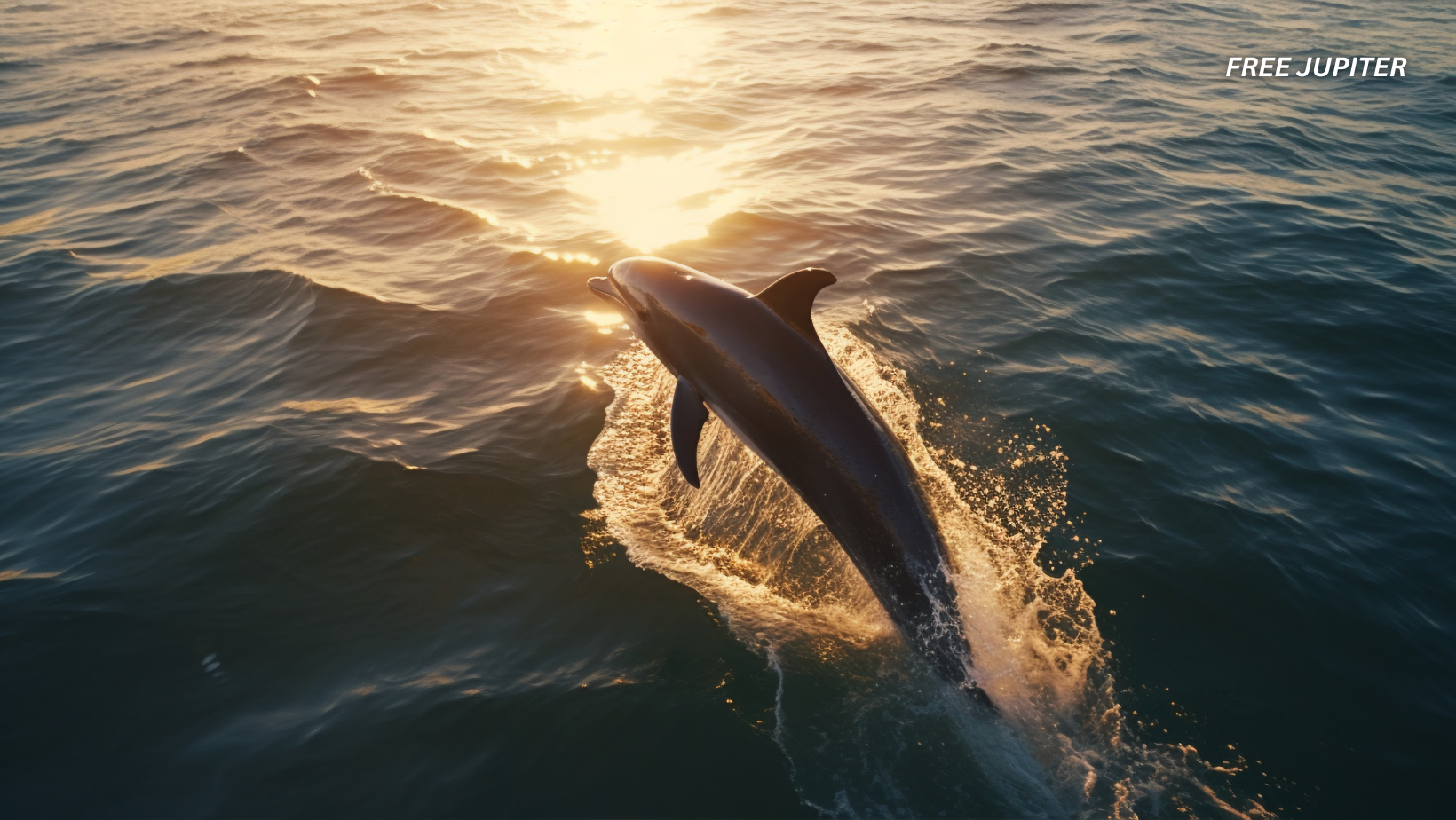Note: FreeJupiter.com shares general info for curious minds 🌟 Please fact-check all claims—and always check health matters with a professional 💙
In a landmark decision that signals a major victory for animal rights, Mexico has officially banned the captivity of dolphins for entertainment purposes. The legislation, passed on June 26, 2025, received overwhelming approval in both the Senate and the Chamber of Deputies, making waves across the globe as a progressive step toward ending marine mammal exploitation.
This new law prohibits the use of dolphins and other marine mammals in shows, swim-with-dolphin programs, therapy sessions, and any other commercial activities that aren’t linked to conservation or scientific research. For a country that has long been a hotspot for dolphin attractions, this is nothing short of historic.
What Happens to Dolphins Already in Captivity?
While the law bans any future captures, breeding, or commercial use of dolphins, it doesn’t mean the existing animals will be released into the wild overnight. Roughly 350 dolphins currently remain in captivity across Mexico, and the law outlines clear measures for their care:
- Relocation to Sea Pens or Open Systems
Instead of being confined to small concrete pools, dolphins will be moved to larger, more natural environments—such as marine enclosures or ocean pens. These spaces allow for flowing seawater and more freedom of movement, creating conditions closer to what they would experience in the wild. - Breeding Ban
No more dolphins born into a life of confinement. The legislation strictly prohibits breeding programs, meaning this generation of captive dolphins will be the last. - Strict Welfare Standards
Authorities are now responsible for overseeing the health and living conditions of captive dolphins. Facilities must comply with higher welfare standards, or face hefty fines and possible closure. - No More Profits
Even marine mammals used for conservation purposes can no longer be exploited for commercial gain. That means no more photo ops, tourist rides, or gimmicky tricks.
This isn’t just about ending performances—it’s about improving the lives of the animals who have already endured years of confinement. While captivity remains a reality for these dolphins, the law aims to provide them with dignity and a higher quality of life.
Read more: You Can Now Talk To Dolphins In Real Time Thanks To Google’s Brand New Tech
The Dark Reality Behind “Swimming with Dolphins”
For decades, swimming with dolphins was marketed as a dream experience—smiling trainers, playful dolphins, and crystal-clear pools. But the truth behind this seemingly magical interaction is far from idyllic. Documentaries like The Cove and Blackfish exposed the cruelty hidden beneath the surface: the capture, suffering, and exploitation of one of the ocean’s most intelligent species.
From Ocean Freedom to Concrete Prisons
Ever wondered how a wild dolphin ends up performing tricks in a hotel pool? The process is brutal. Many dolphins were violently captured from the wild, torn from their pods, and transported to facilities far from their natural homes.
These captures often targeted young females because they were considered easier to train. Pods would be chased, herded, and netted, with the strongest and healthiest taken while the rest were left injured or traumatized. The death toll was staggering—for every dolphin captured alive, an estimated 17 others died during the process. Some were killed outright; others succumbed to stress or injuries.
As the industry grew, facilities turned to captive breeding—a grim practice where dolphins were artificially inseminated to produce calves destined for a life behind glass. These dolphins would never know what it feels like to dive hundreds of feet deep, travel 30 miles a day, or live in the complex social structures their species thrives on.
Training Through Hunger and Fear
The tricks that entertain tourists—jumping through hoops, pulling swimmers, or waving for cameras—don’t come naturally. Dolphins were “trained” through food deprivation. The formula was simple but cruel: no trick, no fish. This wasn’t motivation; it was starvation disguised as training.
Imagine an animal that swims 50 miles daily in the wild, suddenly confined to a chlorinated pool, stripped of its freedom, and dependent on humans for food. The psychological toll was immense. Constant stress, isolation from natural pods, and lack of stimulation often led to aggressive behaviors and even self-harm.
Life in Captivity: A Slow Form of Torture
Marine parks often marketed themselves as sanctuaries providing “world-class care.” The reality was starkly different.
- Cramped Conditions
Wild dolphins are natural athletes. In captivity, their world shrank to a few meters of water—a fraction of the space they need for physical and mental well-being. - Noise Pollution
Dolphins rely on echolocation, and sound travels four times faster in water. In captivity, the hum of pumps, blaring music, and constant crowd noise created a sensory nightmare. This relentless stress often caused ulcers, which were treated with medication-laced fish—another reminder that these dolphins were maintained like products, not cared for like sentient beings. - Family Separation and Inbreeding
Dolphins form deep social bonds. Captivity shattered these relationships and sometimes forced artificial breeding programs, resulting in genetic issues and inbreeding. - Shorter Lifespans
While a wild bottlenose dolphin can live up to 50 years, captive dolphins rarely made it past 20, even with veterinary care. - Lack of Shade and Disease Risks
Many facilities lacked proper shade, exposing dolphins to harsh sun and skin problems. On top of that, disease transmission between dolphins and humans was often overlooked, putting both at risk.
The Myth of the “Happy Dolphin Smile”
One of the biggest deceptions was the dolphin’s permanent “smile.” To tourists, it looked like joy. In reality, it was just anatomy. Behind that curve of the mouth often hid depression, stress, and even suicidal behavior—yes, dolphins have been documented deliberately stopping breathing in captivity.
Adding to the risk, dolphins in captivity have attacked trainers and guests. From bites to broken bones, incidents have been documented worldwide. These aren’t tame pets; they’re powerful predators—wild animals confined against their will.
Education or Entertainment?
Marine parks often justified captivity as “educational,” but experts like Jacques Cousteau disagreed. He famously said studying dolphins in captivity is like studying humans by observing prisoners in solitary confinement. The truth is, these shows taught nothing about natural dolphin behavior—only tricks designed to entertain.
And when criticism surfaced, facilities often responded with censorship. Negative comments on social media were deleted, mortality data was hidden, and dissenting voices were silenced.
The Money Behind the Misery
Why did captivity persist for so long? Simple: money. The industry generated tens of millions of dollars annually in Mexico alone. Resorts partnered with marine parks, building pools within luxury properties and selling “dolphin experiences” as premium packages.
Organizations like the Alliance of Marine Mammal Parks and Aquariums (AMMPA) claimed to certify these facilities for safety and welfare, but their track record told a different story, with multiple incidents of animal deaths and human injuries under their watch.
What This Ban Means for the Future
Mexico’s ban strikes a blow against an industry that thrived on the suffering of intelligent, social creatures. But it also sends a powerful message: entertainment should never come at the expense of another being’s freedom.
The real way to appreciate dolphins is to see them in the wild, leaping through waves, hunting, and socializing as nature intended. Responsible eco-tourism and marine sanctuaries—not concrete pools—are the future.
For now, the law ensures that the dolphins already in captivity will never perform again. Their remaining years will be spent in better conditions, with more space, natural seawater, and care focused on well-being rather than profit.
Read more: How Dolphins Developed the Ability to ‘See’ Underwater with Sound, Explained by Science
Final Thoughts: Choose Freedom Over Fleeting Fun
The next time someone offers you a chance to swim with a dolphin, remember this: that photo op isn’t harmless fun—it’s part of a cycle of cruelty. Every ticket purchased fuels an industry that steals freedom from some of the ocean’s most extraordinary animals.
Mexico has taken a bold step forward. Let’s hope more countries follow suit, so one day, the only place to see a dolphin perform is in the wild ocean they call home—where every leap is real, and every smile is genuine.
Image: Freepik.










